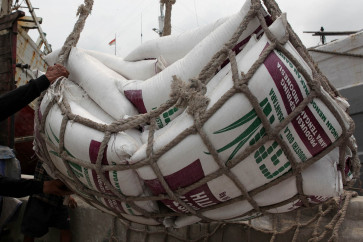Popular Reads
Top Results
Can't find what you're looking for?
View all search resultsPopular Reads
Top Results
Can't find what you're looking for?
View all search resultsCity aborts Ciangir waste treatment project
The Jakarta administration is calling off its plan to develop an environmentally friendly waste treatment plant on a 96-hectare plot of land in Ciangir, Tangerang, after the local regency designated the site as residential area in its new spatial planning program
Change text size
Gift Premium Articles
to Anyone
T
he Jakarta administration is calling off its plan to develop an environmentally friendly waste treatment plant on a 96-hectare plot of land in Ciangir, Tangerang, after the local regency designated the site as residential area in its new spatial planning program.
Governor Fauzi Bowo said Wednesday the city administration would instead build a residential complex in the area through one of the city-owned companies.
The Jakarta administration has been planning to set up new waste treatment plants in Ciangir since the early 1990s. It bought the plot of land in 1994 and held an environmental impact analysis in 1999.
The Tangerang regency administration offered another plot of land in the regency for the project, but the offer was rejected by Jakarta.
“We are thankful for the offer, but we have to refuse. We will build a residential complex in the area instead, as designated by the regency spatial planning program,” Fauzi said.
The governor said that the city would focus on constructing an inner-city waste management facility.
The city began operation of the Cakung-Cilincing Intermediate Treatment Facility (ITF) earlier this month, and is planning to operate Sunter ITF later this year and Marunda ITF next year. The facilities are all located in North Jakarta.
Jakarta Sanitation Agency head Eko Bharuna said that the Cakung-Cilincing ITF had the capacity to process 400 tons of garbage each day. “The capacity will be increased to 600 tons per day in January and 1,300 tons per day when it is fully operated in July next year,” Eko said.
The facility is currently using a 4-hectare plot of land, which will be expanded to 7 hectares next year.
Cakung-Cilincing ITF is using a Mechanical Biological Treatment system in which organic waste is separated from the non-organic. Organic waste will be used to produce gas to be later used for a small power plant.
Sunter ITF has been designed to process up to 1,500 tons of garbage each day and Marunda ITF 2,500 tons.
“The three ITFs will have a total capacity of 5,300 tons of garbage each day, and with the additional capacity of the Bantargebang landfill, we will have enough capacity to process Jakarta waste,” Eko said.
The administration has been asking the private sector to bid on contracts to run three inner-city garbage processing centers — part of its plan to completely privatize dumps citywide.
The Marunda and Sunter waste management plants, which covered 12 hectares and 4 hectares respectively, currently processed between 200 and 300 tons of waste each day.
The city is offering to pay Rp 153,000 (US$17.9) per ton to the private companies.
Jakarta produced an average of 6,595 tons of solid waste a day last year, up from 6,200 in 2009.
The administration is relying on the 110-hectare Bantar Gebang landfill in Bekasi.










